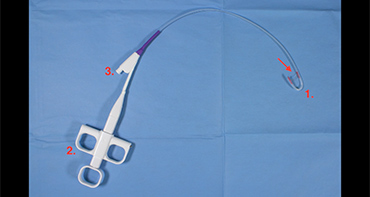S. Groth and T. Rösch, Hamburg

Sequenzen:

Using a distancing cap, the mucosa is spread apart to allow better visualization of mucosal details in individual areas along the circumference. The whitish acetic acid staining makes the surface structure more visible, and a short tongue of Barrett’s appears on the left. Macroscopically, the rest of the Z-line has gastric mucosa on it.







